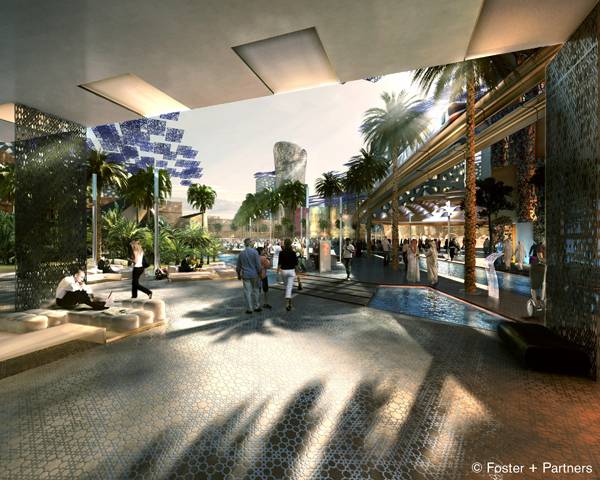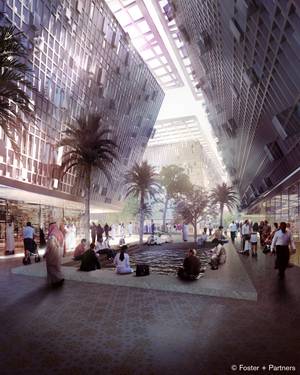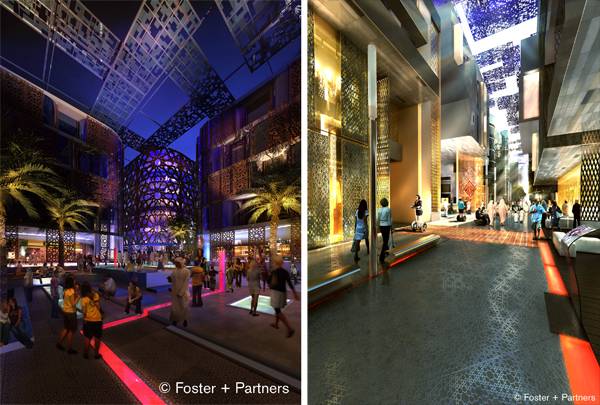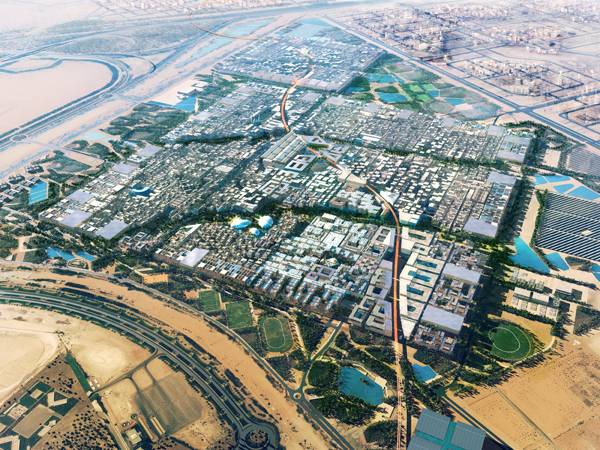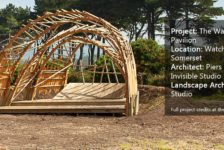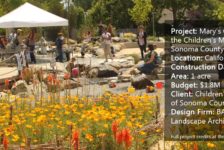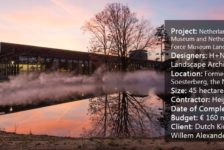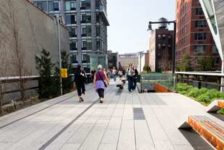Foster + Partners create Masdar City A few kilometers from downtown Abu Dhabi, in the United Arab Emirates, an ambitious billionaire project is taking place. Although still in its early stages, Masdar City is already an incredible development that aims at making it among the most sustainable cities of the planet and becoming a research leader in energy-related technologies. Masdar is designed to offer “the highest quality of life with the lowest environmental footprint” by combining appropriate land use with a clean transportation system and energy efficiency approach – from the architectural to the urban scale. Designing For High-Efficiency The experimental city has currently six completed buildings (three residential, two laboratories and one knowledge centre) which were designed with high-efficiency approach: they have half of the energy and water demand of a conventional building of the same size. All waste water in Masdar is treated and re-used in the irrigation system reducing the water consumption to the minimum.
The city’s master plan and the institute of technology were designed by Foster+Partners and the urban infrastructure constructed by Mott MacDonald Engineering. Many other firms have also contributed to the growth of Masdar and many more will do in the future. Broad Perspective Training With this current “green building” obsession in climate-sensitive design, the urban scale approach is often overlooked; however, the surroundings massively influence on the amount of heat the buildings will be exposed to and, consequently, on their demand for cooling. In Masdar, there is a concern in both small and large scales and a great deal of the energy efficiency achieved is due to passive cooling techniques and use of smart materials. The passive cooling techniques, such as careful orientation of streets for optimized ventilation and overshadowing, result in a thermally comfortable outdoor environment – the air temperature is about 10 degrees lower in Masdar’s streets if compared to downtown Abu Dhabi’s! The Institute of Technology Masdar is expected to have 40 000 residents in the future and is today home to a few hundred who are involved in its development – in particular those working at the Masdar Institute of Science and Technology, which is the heart of the city. The institute is a graduate-level university operating in partnership with other universities from around the globe as well as many private corporations. See also: Design in The Venus Project 10 Ways to Design Climate Sensitive Cities Their research focuses on the following areas: smart buildings and smart grid; green supply chain; (clean) transportation; sustainability management system; energy-efficient lighting and thermal energy (geothermal). Renewable Energy and Transport The zero-carbon emission transportation system will include electric cars, trams, pods and buses. It is important to point out that the urban planning is pedestrian-oriented, with reduced travel distances due to its compactness and mixed land-use. Besides, the traffic operates underneath the city, leaving the ground level exclusively to pedestrians. Masdar is currently powered by a 10 MW photovoltaic plant built across 22 hectares (largest in the Middle East) and there are also additional solar panels installed on top of the buildings across the city. As the production is bigger than the internal demand, the excess energy is sent to Abu Dhabi’s energy grid. Future Smart Cities What does it take a city to be smart? Or sustainable? Be aware that there is no such thing as a “sustainable city”, as sustainability is not something that can ever be achieved. We can, however, have a more sustainable city by either comparing one city to another or the same one in different contexts or moments in time. Cities are facing massive challenges nowadays, changes in the climate and dramatic population growth urge urban planners and decision-makers to seek for smart solutions. A smart city is a community on the path towards a sustainable future – not aiming to reach it as a goal, but rather in a commitment to improve itself by the day. In the words of speechwriter Sean Gresh “a smart city is a city using technologies that enable it to employ solutions that help create a fertile environment for sustainable growth”. Recommended Reading: Design with Nature by Ian L. McHarg Principles of Ecological Landscape Design by Travis Beck Article written by Julia Lucchese RETURN TO HOME PAGE Published in BlogLogin
Lost Password
Register
If this is your first time on the new site, please click "Forgot your password?". Follow the steps to reset your password. It may be the same as your old one.



